Venice 2024: Bulgaria & Serbia both create scenography
to explore political histories
At the Venice Biennale of Art 2024, the national pavilions
of Bulgaria & Serbia both create immersive environments through which
contributing artists explore their national histories. For Serbia, Aleksander
Denić has created a witty nonplace of ideological change, while for Bulgaria Krasimira
Butseva, Lilia Topouzova & Julian Chehirian have built a domestic, dark
space to build knowledge and recognition of collective traumas.
Two national pavilions of Eastern Europe countries use
similar, theatrical approaches to exploring their political pasts. Both Serbia
and Bulgaria have created immersive, world-building installations that take the
visitor through an uncanny experience, though with different dramaturgy and modes
of contemplating memory and history.
Serbia’s presentation, Exposition Coloniale from artist Aleksander Denić and curator Ksenija Samardžija, is a playful, theme park-like collection of commercial architectures, shops, and between places that act as a de ja vu of what may have been present before the creation of modern-day Serbia. Bulgaria’s national offering is located away from the two main Biennale sites at the Centro Culturale Don Orione Artigianelli, edging onto the The Canale della Giudecca, also creates an immersive, all-encompassing space to reflect upon the nation’s past. Here, however, the re-enactment is not based upon irony and pop-playfulness, but on dark, deep, poetic aural and object histories of persecution within forced labour camps and prisons between 1945 and 1989.
![]()
![]()
Curated by Vasil Vladimirov and featuring artists Krasimira Butseva, Lilia Topouzova, and Julian Chehirian, Bulgaria’s offering, The Neighbours, invites you to sit down and dwell with the testimonies and gravitas presented. Laid out with period furniture, cabinetry, and technology, visitors are invited to sit on the sofas and engage with histories presented through audio, projection, and the selection of books, objects, and works scatted across the scene. Designed as a line of inquiry and archive as much as creative display of Bulgaria’s past, visitors are unable to simply look at the art as is possible in some national pavilions. Here, visitors are invited to become witnesses more then viewers, and to spend time with the project, listen to the stories, and consider the arrangements of the space, requiring an amount of emotional labour.
Over the socialist era, hundreds of thousands of Bulgarians were sent to camps without trial. The breadth of individuals sent away included political dissidents, artists, peasants who refused to give their land to the state, gay people, Muslim minorities, and others who opposed the ideology. Once the regime collapsed, the archive of the secret police was slowly, systematically destroyed, though survivors and came forward to speak of their experiences.
![]()
![]()
![]()
![]()
A ten-year trial against perpetrators collapsed in 2002 due to the statute of limitations, but a year later the team behind this Venice presentation began research into memories of the camps. Central are forty interviews, some of which are used in the exhibition which is designed to recreate fragments of survivors’ homes within which the interviews were conducted.
The objects around the room – wine, cigarettes, nicknacks, photographs, books, etc – are intermingled with items from the camps: a police file, a smuggled letter. There are items of nature throughout, including stones and water, recovered by the artists from the landscapes that were once the camps. Across it all, lighting and projections work with the audio recordings to set a sombre, reflective mood, but one about recognition and regrowth, awareness and acknowledgement.
![]()
![]()
![]()
Aleksandar Denić’s Exposition Coloniale also recreates a conflicted, confused past with gaps in cultural memory. Conceived as an exploratory landscape of social memorabilia, it is rooted in Michel Foucault’s idea of the heterotopia, a world within a world designed to both mimic and unsettle, invite recollection but keep an idea of the past in its place.
Outside the entrance to the Serbia pavilion, built in the 1930s when the Giardini expanded, has the word JUGOSLAVIA monumentally formed into its façade. Inside, the creative team have created a series of small buildings and pavilions, all able to be entered and explored, as architectural situations that speak to a conflation of physical and emotional memories the country’s past.
![]()
![]()
![]()
The memories are unreliable, and in places deliberately played by the artist. The construct speaks to the official national history, cultural and social recollections, myth and imagination, and romantic ideals of what once was, or even a past future hope. This is a version of Serbia, but it could be anywhere, speaking to levers of capitalism and the European project as much as socialism or ideologies of the postwar period. At once, it is humorous but with a discomfort, injecting the ideas and architectures with a sense of nervousness not only for Serbian nationals but for all passing-through international visitors – this nonplace speaks to all places.
Denić is not only a visual artist, but also a stage and film production designer for projects from period dramas about Rasputin, horror films, and opera. Here, his scenography combines elements of all these and while does not contain one single narrative as a drama project may, it invites countless unravellings and lines of inquiry. This border-town like collection of spaces creates open-stories about the other, the places and ideas just the other side of the border – whether that’s geographic, political, chronological, or architectural.
![]()
![]()
![]()
![]()
Both Serbia’s and Bulgaria’s Venice Biennale pavilions use strategies of architectural worldbuilding to create immersive, uncanny spaces. The Neighbours presents a place between memory and physicality as a genuine, habitable, and domestic environment overlaid with palimpsests of traumatic memory, evidence, and visual record. It speaks to how such cultural and personal memories do not only penetrate a people and their story, but the soil and nature of a place. Exposition Coloniale may read as an altogether more punchy and witty reconstruction from memories and imaginaries, but within it there is also a present a darkness and loss of hope. Both projects carry a sense of searching through the rubble of memory and place to find a sense of past truth and what was lost.
Serbia’s presentation, Exposition Coloniale from artist Aleksander Denić and curator Ksenija Samardžija, is a playful, theme park-like collection of commercial architectures, shops, and between places that act as a de ja vu of what may have been present before the creation of modern-day Serbia. Bulgaria’s national offering is located away from the two main Biennale sites at the Centro Culturale Don Orione Artigianelli, edging onto the The Canale della Giudecca, also creates an immersive, all-encompassing space to reflect upon the nation’s past. Here, however, the re-enactment is not based upon irony and pop-playfulness, but on dark, deep, poetic aural and object histories of persecution within forced labour camps and prisons between 1945 and 1989.


Figs.i,ii
Curated by Vasil Vladimirov and featuring artists Krasimira Butseva, Lilia Topouzova, and Julian Chehirian, Bulgaria’s offering, The Neighbours, invites you to sit down and dwell with the testimonies and gravitas presented. Laid out with period furniture, cabinetry, and technology, visitors are invited to sit on the sofas and engage with histories presented through audio, projection, and the selection of books, objects, and works scatted across the scene. Designed as a line of inquiry and archive as much as creative display of Bulgaria’s past, visitors are unable to simply look at the art as is possible in some national pavilions. Here, visitors are invited to become witnesses more then viewers, and to spend time with the project, listen to the stories, and consider the arrangements of the space, requiring an amount of emotional labour.
Over the socialist era, hundreds of thousands of Bulgarians were sent to camps without trial. The breadth of individuals sent away included political dissidents, artists, peasants who refused to give their land to the state, gay people, Muslim minorities, and others who opposed the ideology. Once the regime collapsed, the archive of the secret police was slowly, systematically destroyed, though survivors and came forward to speak of their experiences.
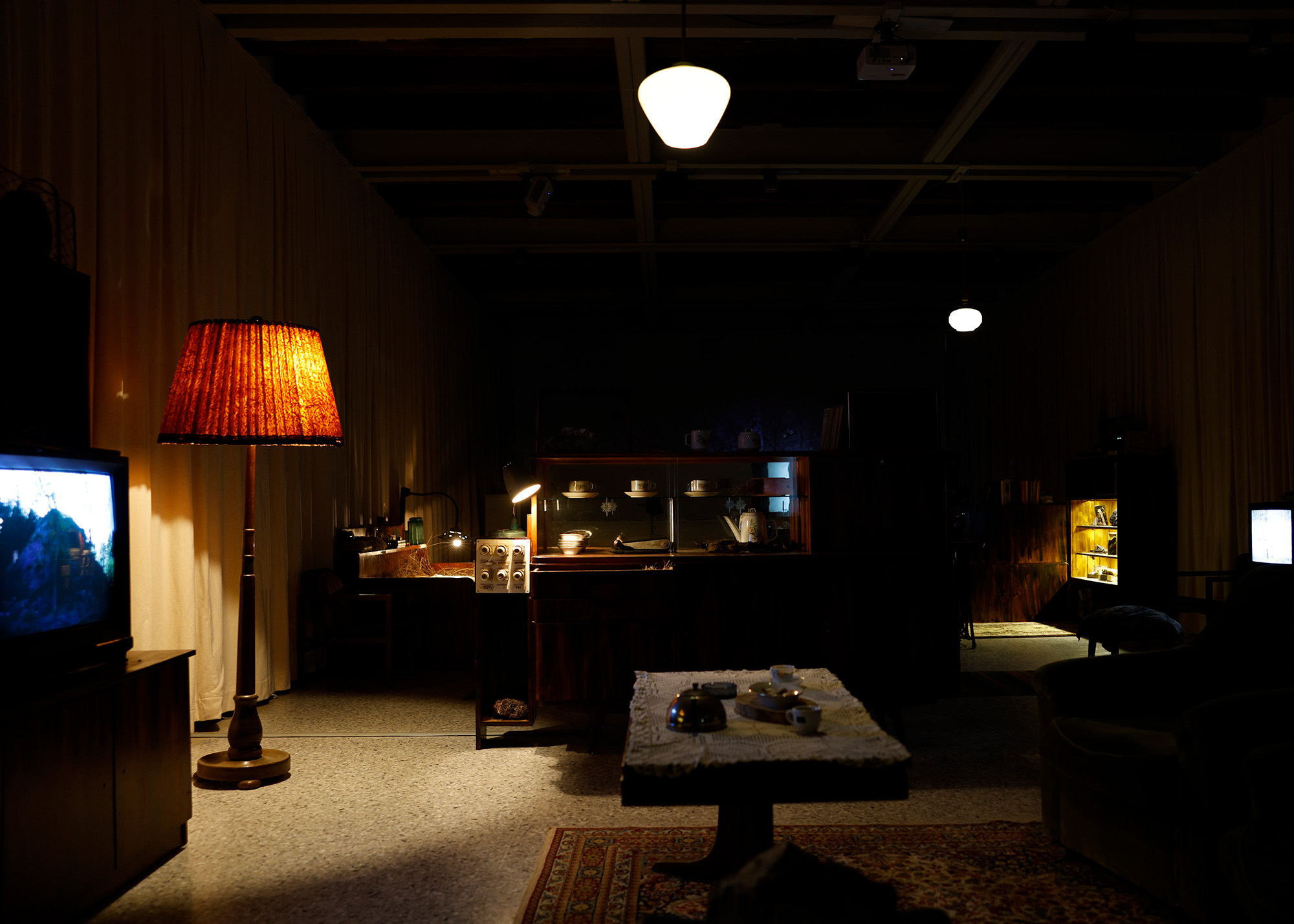


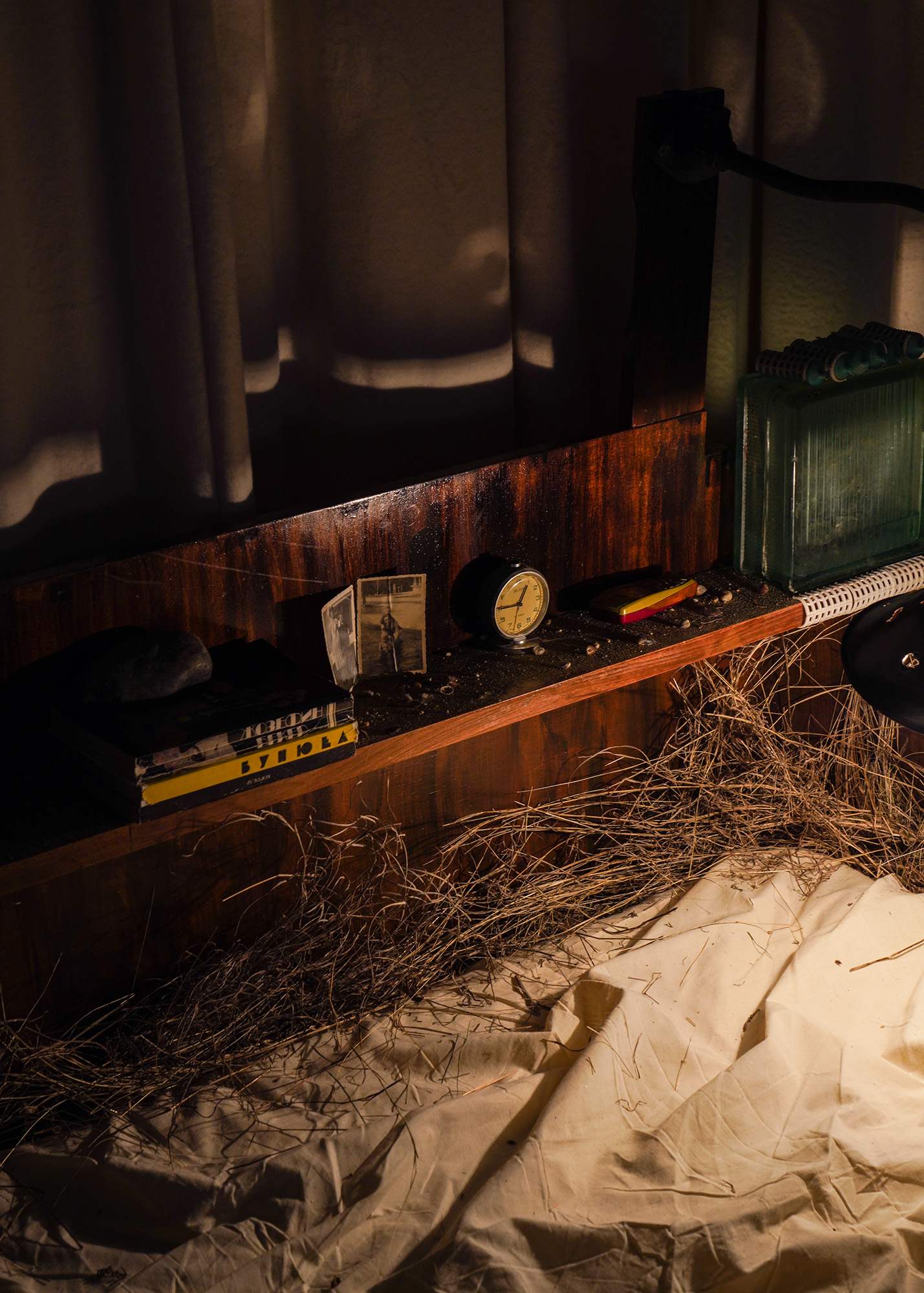
Figs.iii-vi
A ten-year trial against perpetrators collapsed in 2002 due to the statute of limitations, but a year later the team behind this Venice presentation began research into memories of the camps. Central are forty interviews, some of which are used in the exhibition which is designed to recreate fragments of survivors’ homes within which the interviews were conducted.
The objects around the room – wine, cigarettes, nicknacks, photographs, books, etc – are intermingled with items from the camps: a police file, a smuggled letter. There are items of nature throughout, including stones and water, recovered by the artists from the landscapes that were once the camps. Across it all, lighting and projections work with the audio recordings to set a sombre, reflective mood, but one about recognition and regrowth, awareness and acknowledgement.


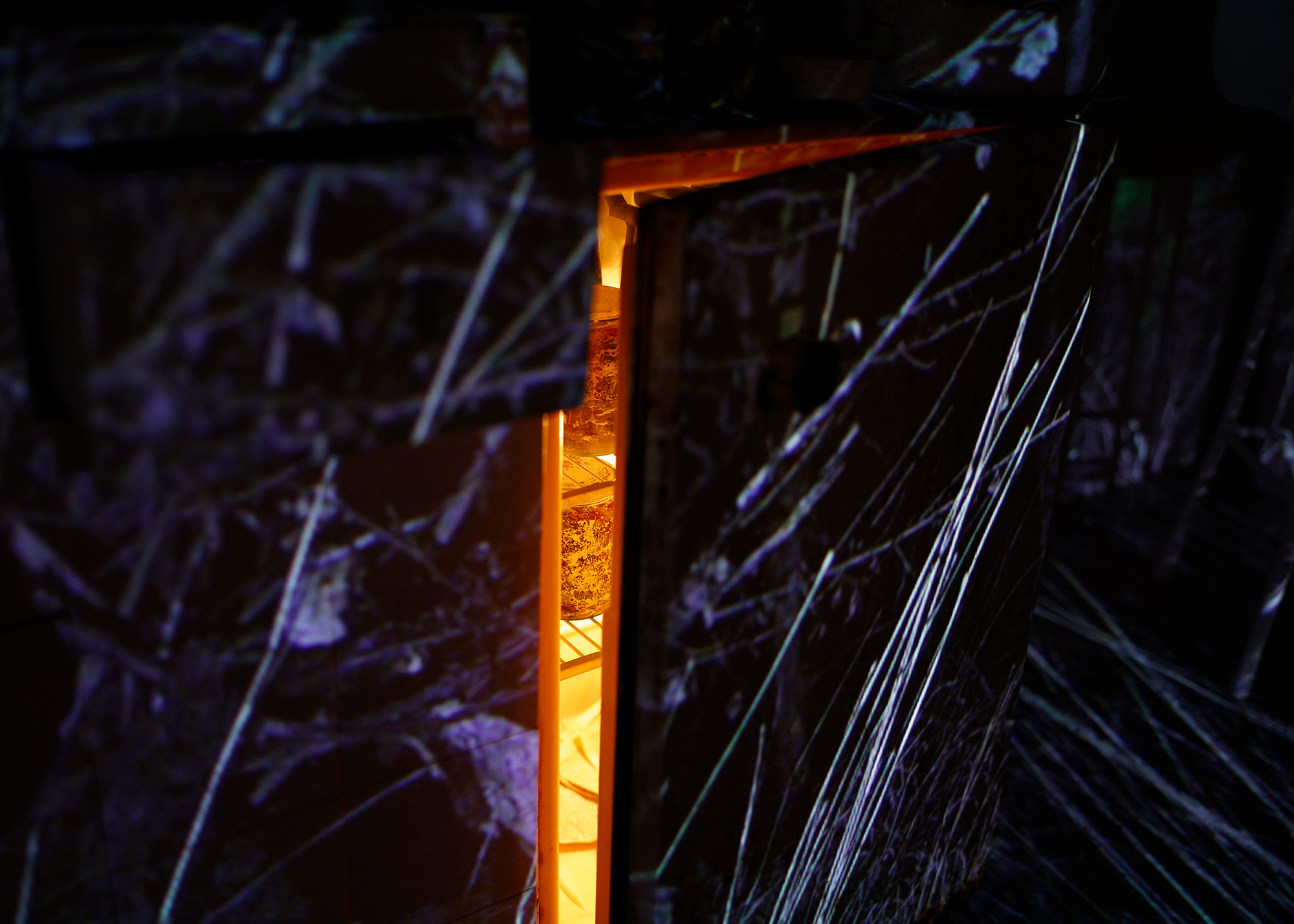
Figs.vii-ix
Aleksandar Denić’s Exposition Coloniale also recreates a conflicted, confused past with gaps in cultural memory. Conceived as an exploratory landscape of social memorabilia, it is rooted in Michel Foucault’s idea of the heterotopia, a world within a world designed to both mimic and unsettle, invite recollection but keep an idea of the past in its place.
Outside the entrance to the Serbia pavilion, built in the 1930s when the Giardini expanded, has the word JUGOSLAVIA monumentally formed into its façade. Inside, the creative team have created a series of small buildings and pavilions, all able to be entered and explored, as architectural situations that speak to a conflation of physical and emotional memories the country’s past.



Figs.x-xii
The memories are unreliable, and in places deliberately played by the artist. The construct speaks to the official national history, cultural and social recollections, myth and imagination, and romantic ideals of what once was, or even a past future hope. This is a version of Serbia, but it could be anywhere, speaking to levers of capitalism and the European project as much as socialism or ideologies of the postwar period. At once, it is humorous but with a discomfort, injecting the ideas and architectures with a sense of nervousness not only for Serbian nationals but for all passing-through international visitors – this nonplace speaks to all places.
Denić is not only a visual artist, but also a stage and film production designer for projects from period dramas about Rasputin, horror films, and opera. Here, his scenography combines elements of all these and while does not contain one single narrative as a drama project may, it invites countless unravellings and lines of inquiry. This border-town like collection of spaces creates open-stories about the other, the places and ideas just the other side of the border – whether that’s geographic, political, chronological, or architectural.

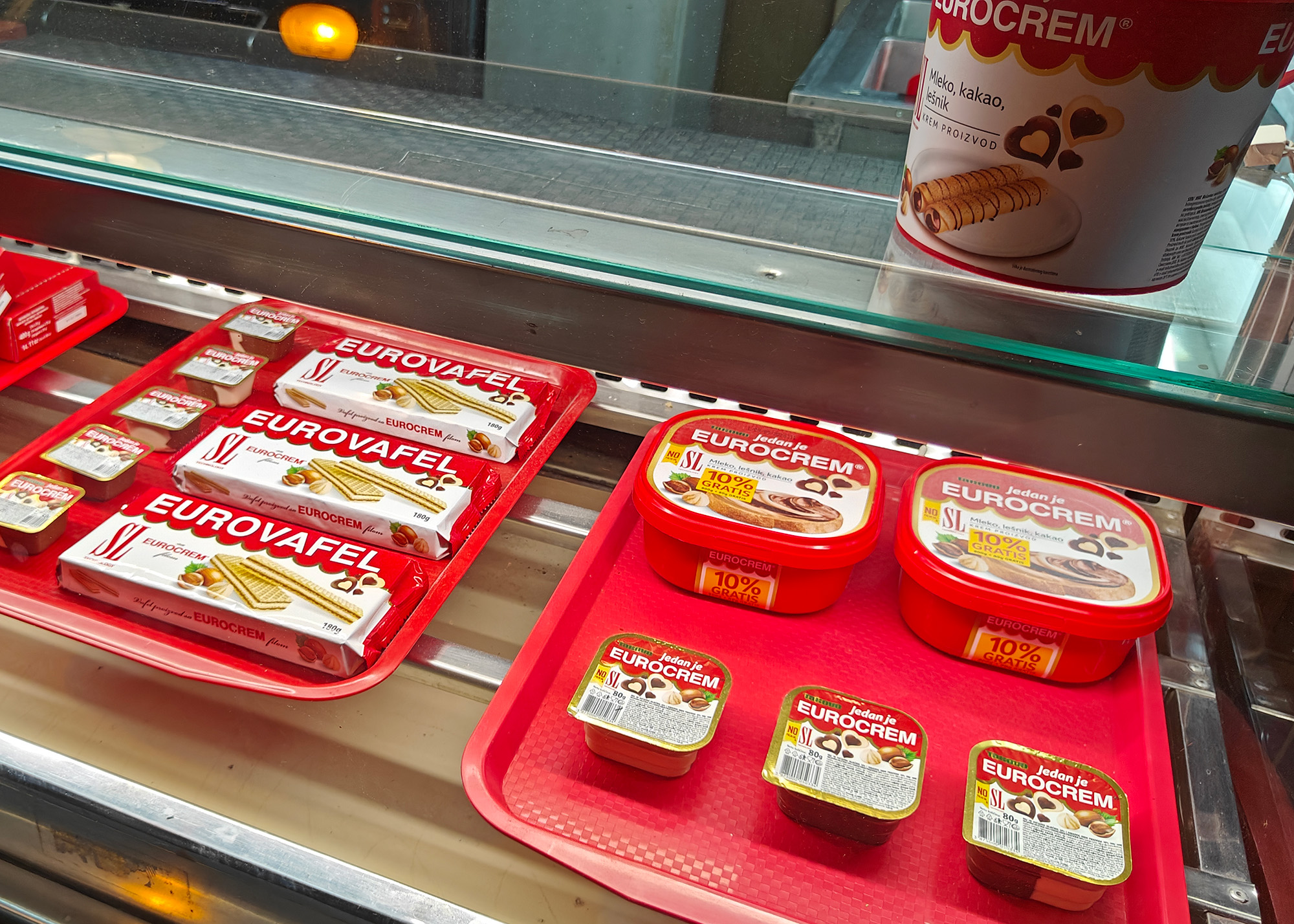
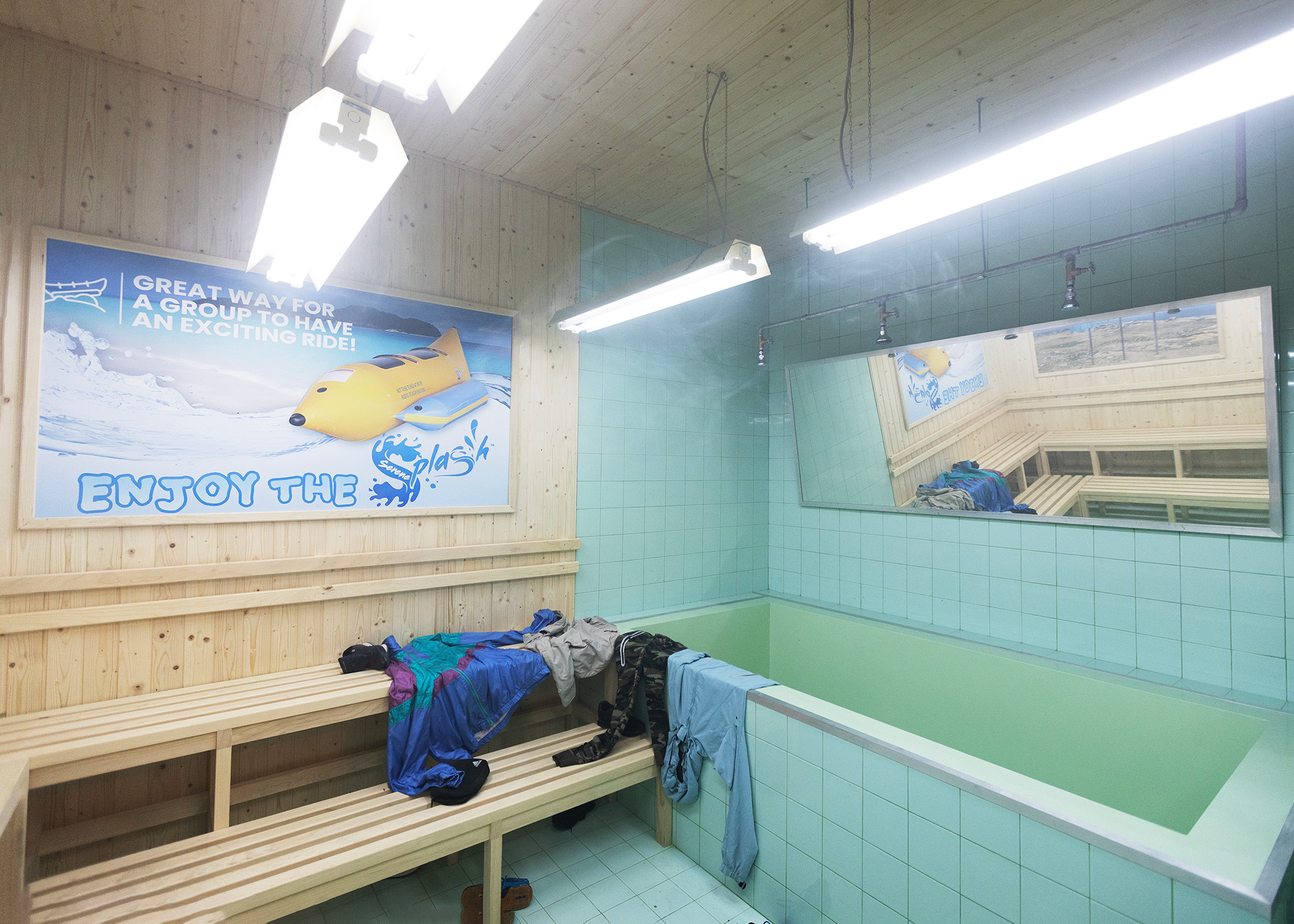

Figs.xiii-xvi
Both Serbia’s and Bulgaria’s Venice Biennale pavilions use strategies of architectural worldbuilding to create immersive, uncanny spaces. The Neighbours presents a place between memory and physicality as a genuine, habitable, and domestic environment overlaid with palimpsests of traumatic memory, evidence, and visual record. It speaks to how such cultural and personal memories do not only penetrate a people and their story, but the soil and nature of a place. Exposition Coloniale may read as an altogether more punchy and witty reconstruction from memories and imaginaries, but within it there is also a present a darkness and loss of hope. Both projects carry a sense of searching through the rubble of memory and place to find a sense of past truth and what was lost.
Lorem Ipsum is dolor sit amet, consectetur adipiscing elit. In aliquet elementum nulla, blandit tempor nunc. Phasellus ullamcorper lorem risus. Nulla in molestie dui.
www.url.com
Aleksandar Denić (born 31 October 1963, in Belgrade) is a Serbian visual artist, stage designer and film production designer. He is known as a scenographer of feature films, as well as for his work at major theatres and opera houses including Berlin, Hamburg, Stuttgart, Bayreuth, Paris, Zurich, Wien, Salzburg, Köln, Munich, Geneva, Athens. Denić graduated from the Academy of Applied Arts of the University of the Arts in Belgrade in painting, film and set design. He worked after graduation mainly as a production designer for film projects, including the film Underground by Emir Kusturica. From 2011 closely collaborate with Frank Castorf. In the past decade, he became one of the busiest European scenographers. In his visual interpretations of dramatic texts, the scene becomes a peculiar and elaborate semiotic system that considers postmodernism through artistic means, everyday life, history, identity, the relationship between the theatrical and the media spectacle, as well as social tasks and opportunities of art itself. It is for this reason that Denić's stage designs represent some of the most successful and critically acclaimed European and global visual dramaturgies that self-consciously explore their own communication potentials.
Ksenija Samardžija completed a degree in Art History at the Faculty of Philosophy in Belgrade, and successfully passing the curatorial exam at the National Museum in Belgrade, has established the artistic association PODR.UM in 2013. This initiative becomes instrumental in organising a variety of exhibitions, art residency programmes, presentations, and other endeavours that facilitate meaningful interaction between artists and the public; continued collaboration on international projects is noteworthy for promoting contemporary artists and creating outlets for the production and display of new work.
Ksenija's tenure at the Heritage House (Belgrade) has further honed her skills in curatorial duties, collection management, and understanding of market conditions.
Since 2019, Ksenija has served as the director of the Foundation Saša Marčeta, which operates within the Bioskop Balkan (formerly a cinema hall housed in a grand 19th-century building) to carry out its activities. Her dedication to the field and keen insights have solidified her reputation as a trustful leader in the art world, and her work continues to have a lasting impact on the artistic community.
Vasil Vladimirov is a curator based in Sofia and
his practice lies at the intersection between art, politics, and history. He is
the curator and director of KO-OP Art Space and the founder of FIG – The
Festival for Illustration and Graphics. His extensive involvement in the art
scene includes guest curator positions at prominent local and international
festivals and gallery programmes. He is a fellow of the Centre for Social
Vision in Sofia, developing a research project and LARP workshop connected to
communist-era cultural heritage. He holds a BA in Modern History and Politics
from the Royal Holloway, University of London and an MA in Political Sociology
from the London School of Economics and Political Science.
Krasimira Butseva is a visual artist and researcher
based in Sofia and London. She is a Senior Lecturer at the London College of
Communication, University of the Arts London. In her creative and academic
practice, Butseva works with trauma, memory, political violence, official and
unofficial history, whilst employing video, sound, photography and installation
as mediums. She has taken part in solo and group exhibitions in London,
Brighton, Ipswich, Portsmouth, Gosport, Pingyao, Sofia, Plovdiv, Lovech, Cape Town,
Kyiv, Belgrade, Berlin, and Stuttgart.
www.krasimirabutseva.co.uk
Dr. Lilia Topouzova is an Assistant Professor of
History and Creative Nonfiction at the University of Toronto (ICCIT, History,
Munk School of Global Affairs & Public Policy). She is a scholar and a
documentary filmmaker whose work is situated at the intersection of history and
memory. Her writing has appeared in the American Historical Review, Gender
& History, The Routledge Handbook of Memory and Place, the Encyclopedia of
Transitional Justice, the Journal of Visual Literacy and The European Review of
Books. Topouzova was the scriptwriter of the documentary films The Mosquito
Problem & Other Stories (2007) and Saturnia (2012), which she also
co-directed.
www.history.utoronto.ca/people/directories/all-faculty/lilia-topouzova
Julian Chehirian is a multimedia artist and
researcher living between Philadelphia and Sofia. He is currently a PhD
candidate in the History of Science at Princeton University, USA. Julian
creates site-specific multimedia installations that employ modified objects,
video, sound, and experimental technologies. In his scholarship, he writes on
the history of attention and psychotherapy, post-war art and transnational
history. His writing has appeared in edited collections for Yale University
Press, Columbia University Press, Bloomsbury, in Culture, Medicine and
Psychiatry, and in The Public Domain Review.
www.julianc.com
Ksenija Samardžija completed a degree in Art History at the Faculty of Philosophy in Belgrade, and successfully passing the curatorial exam at the National Museum in Belgrade, has established the artistic association PODR.UM in 2013. This initiative becomes instrumental in organising a variety of exhibitions, art residency programmes, presentations, and other endeavours that facilitate meaningful interaction between artists and the public; continued collaboration on international projects is noteworthy for promoting contemporary artists and creating outlets for the production and display of new work.
Ksenija's tenure at the Heritage House (Belgrade) has further honed her skills in curatorial duties, collection management, and understanding of market conditions.
Since 2019, Ksenija has served as the director of the Foundation Saša Marčeta, which operates within the Bioskop Balkan (formerly a cinema hall housed in a grand 19th-century building) to carry out its activities. Her dedication to the field and keen insights have solidified her reputation as a trustful leader in the art world, and her work continues to have a lasting impact on the artistic community.
Vasil Vladimirov is a curator based in Sofia and his practice lies at the intersection between art, politics, and history. He is the curator and director of KO-OP Art Space and the founder of FIG – The Festival for Illustration and Graphics. His extensive involvement in the art scene includes guest curator positions at prominent local and international festivals and gallery programmes. He is a fellow of the Centre for Social Vision in Sofia, developing a research project and LARP workshop connected to communist-era cultural heritage. He holds a BA in Modern History and Politics from the Royal Holloway, University of London and an MA in Political Sociology from the London School of Economics and Political Science.
Krasimira Butseva is a visual artist and researcher based in Sofia and London. She is a Senior Lecturer at the London College of Communication, University of the Arts London. In her creative and academic practice, Butseva works with trauma, memory, political violence, official and unofficial history, whilst employing video, sound, photography and installation as mediums. She has taken part in solo and group exhibitions in London, Brighton, Ipswich, Portsmouth, Gosport, Pingyao, Sofia, Plovdiv, Lovech, Cape Town, Kyiv, Belgrade, Berlin, and Stuttgart.
www.krasimirabutseva.co.uk
Dr. Lilia Topouzova is an Assistant Professor of History and Creative Nonfiction at the University of Toronto (ICCIT, History, Munk School of Global Affairs & Public Policy). She is a scholar and a documentary filmmaker whose work is situated at the intersection of history and memory. Her writing has appeared in the American Historical Review, Gender & History, The Routledge Handbook of Memory and Place, the Encyclopedia of Transitional Justice, the Journal of Visual Literacy and The European Review of Books. Topouzova was the scriptwriter of the documentary films The Mosquito Problem & Other Stories (2007) and Saturnia (2012), which she also co-directed.
www.history.utoronto.ca/people/directories/all-faculty/lilia-topouzova
Julian Chehirian is a multimedia artist and researcher living between Philadelphia and Sofia. He is currently a PhD candidate in the History of Science at Princeton University, USA. Julian creates site-specific multimedia installations that employ modified objects, video, sound, and experimental technologies. In his scholarship, he writes on the history of attention and psychotherapy, post-war art and transnational history. His writing has appeared in edited collections for Yale University Press, Columbia University Press, Bloomsbury, in Culture, Medicine and Psychiatry, and in The Public Domain Review.
www.julianc.com
images
fig.i Lorem ipsum dolor sit amet, consectetur adipiscing elit. Vivamus pulvinar risus quis feugiat commodo. Suspendisse rhoncus diam et viverra dignissim. Integer ac quam sed lectus eleifend volutpat.
fig.ii Sed consequat ante eget magna rhoncus ultricies laoreet sit amet odio. © Lorem Ipsum
images
figs.i,x-xii,xv Aleksandar Denić, Exposition Coloniale, Installation view. Credits Aleksandar Denić, courtesy of the artist. Photos
©
Nebojša Babić.
figs.ii The Neighbours, by Krasimira Butseva, Julian Chehirian, Lilia Topouzova, Installation views. Courtesy The Neighbours. Photos
© Krasimira Butseva.
figs.xiii-xvi
Aleksandar Denić, Exposition Coloniale, Installation view. Photos
© Will Jennings.
publication date
03 September 2024
tags
Bulgaria, Krasimira Butseva, Aleksander Denić, Exposition
Coloniale, Michel Foucault, Heterotopia, History, Ideology, Labour camp, Memory,
Nonplace, Prison, Serbia, Ksenija Samardžija, Scenography, Socialism, Theatre, The
Neighbours, Venice Biennale, Vasil Vladimirov
fig.ii Sed consequat ante eget magna rhoncus ultricies laoreet sit amet odio. © Lorem Ipsum


